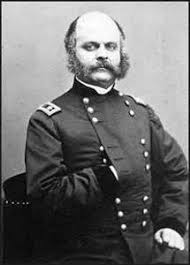Just want to say that this an amazing TL! My hat's off to you!
Many thanks! I hope to have the next section focusing on the northern front in Canada up by sometime in March! Then we'll cover points West!
Just want to say that this an amazing TL! My hat's off to you!
Is the lack of grain for the UK being dealt with here?
If we go by the historical consumption, production and import figures ...
https://babel.hathitrust.org/cgi/pt?id=uc1.b3011606;view=1up;seq=409
... it is notable that the Civil War years were the 4 year high point of wheat consumption and importation over a 15 year average.
In 1861-2 the British produced 3.1 bushels per head of wheat and imported 2.5 bushels per head. However, the table showing the source of this imported wheat by year shows something else very important - that American wheat is not the whole imported supply (it hovers around half of the imports during the early Civil War years, note that imports are only 40% of consumption). Thus with the removal without replacement of American wheat the consumption drops from 5.6 bushels per head to about 4.5 bushels per head - which is not a disaster, it's actually the consumption in some prior years.
The data also point out the interesting detail that this is not a fact of life. A few years previously the main supplier of wheat (insofar as there is one) was France, and with the Civil War over this largely resumes.
(Post ACW British consumption of wheat drops noticeably)
Is the lack of grain for the UK being dealt with here?
It is further worth noting that EnglishCanuck argues against the notion of Union collapse despite the fact the British threaten to cut off well over 90% of their supply of gunpowder and possibly 100% at least for the first year of conflict. The notion that the British will keel over because around 20-25% of supply of one food source among several (so not a drop of 20% in calories note) is threatened seems rather fanciful. It is also hard to see from the available evidence that the British would notice a significantly higher than usual price of bread.
How long until the next update?
Working on itit's been lagging thanks to RL issues, but if I can buckle down this weekend I can probably get it out by next week.
Well one of the preconceptions I had when starting this TL was that the Union did have the resources to fight on with a British declaration of war, and how I've managed to game it shows they could hang on, even if by their finger nails, but there's lots of long term problems on both sides I can only guess at. Gunpowder could be imported from other European nations (at a higher cost than OTL) and even small supplies of rifles and other necessary materials will probably slip through the blockade in reasonable numbers to supplement what could not be provided by domestic industry.
What I've come to realize is that such a system would not be cheap or easy, but something which the US could conceivably accomplish.
Oh I would agree on the powder situation. I too lean towards the US making do. It is just they will be functioning under more constrained supply than OTL, even allowing for the black market supply of finished gunpowder from South America and Europe, plus in due course nitre beds beginning to yield the necessary raw material.
Similarly for gun iron, I strongly suspect the Americans would go back to earlier pattern heavier barrels which could make good use of the inferior metal available to them. The downside for the troops is a weapon that is somewhat more cumbersome and wearing to wield than the Springfield. The downside for the Armory is that they would have to adapt their machinery causing a temporary bottleneck in production.
A quick note on privateering by the Americans, it is entirely possible they may be able to procure and arm steamers for the role. They would struggle to enjoy 1812 levels of success though because while the US does still enjoy one of the largest and most sophisticated commercial sailing fleets, full of vessels eminently convertible to 1812 privateering requirements, they were at this stage less well endowed with steam ships and every steam ship detached to privateering is one less to bring in supplies (though it might capture something useful of course). That said funnily enough the more effective British interdiction the more US privateers we are likely to see.
Loving the timeline English.

Happy Canada Day all! Pictures for this chapter to follow tomorrow, and then we'll be up to Chapter 60 by the end of the week!
Hurrah good to see this tale restart with a bang, a rattle of musketry and a clash of bayonets!
The Canucks Take Manhattan, anyone?And with Burnside to oppose them what are the chances of the British Army being in Manhattan by midsummer?
And with Burnside to oppose them what are the chances of the British Army being in Manhattan by midsummer?
Hurrah good to see this tale restart with a bang, a rattle of musketry and a clash of bayonets!
Glad to see this timeline back in action. Keep up the good work!
The Canucks Take Manhattan, anyone?
By the way @EnglishCanuck, will we ever see the return of the Fulford family?
Burnside couldn't handle something as large as the Army of the Potomac, but in OTL, he did well with smaller forces. Burnside was good enough to shut down 90% of the North Carolina coast earlier in the war and defeat Longstreet late in the war. Even with the AotP, he stole a march on Lee, arriving at Fredericksburg several days before Lee. The pontoon bridges he needed did not, but if they had Burnside might have been seen as one of the most brilliant generals of the war.